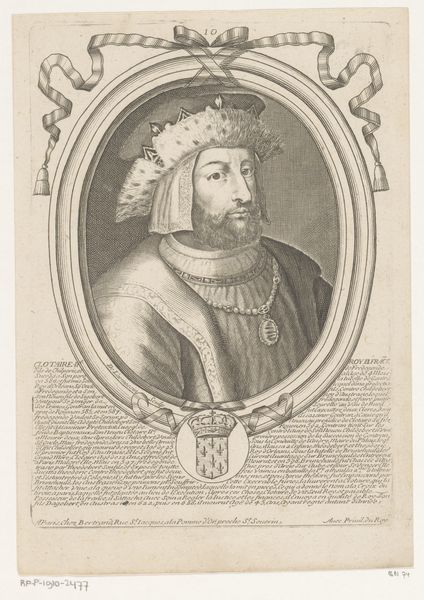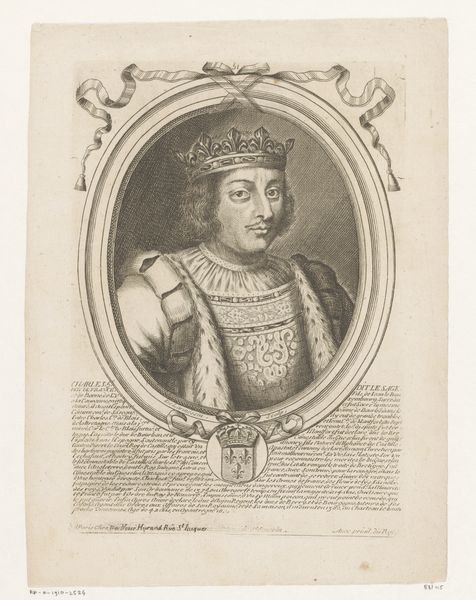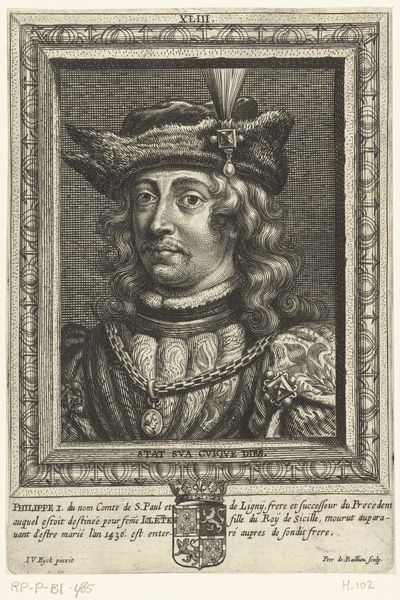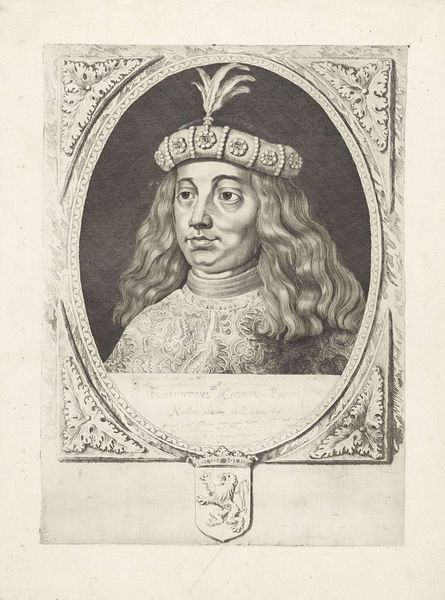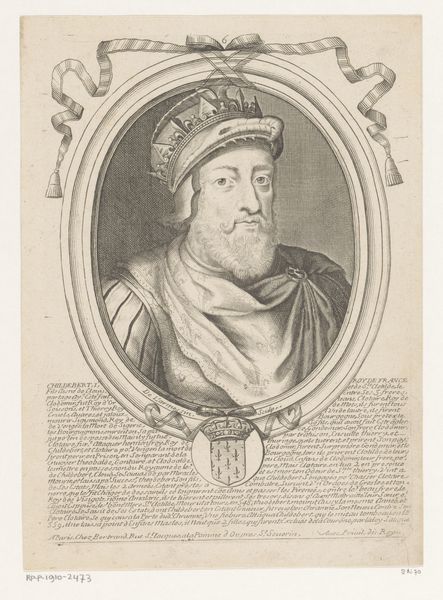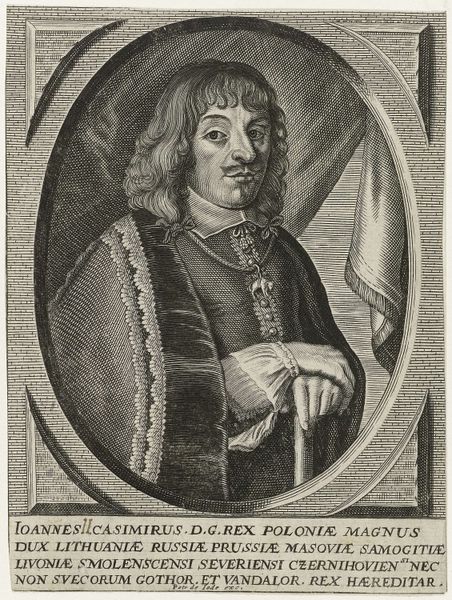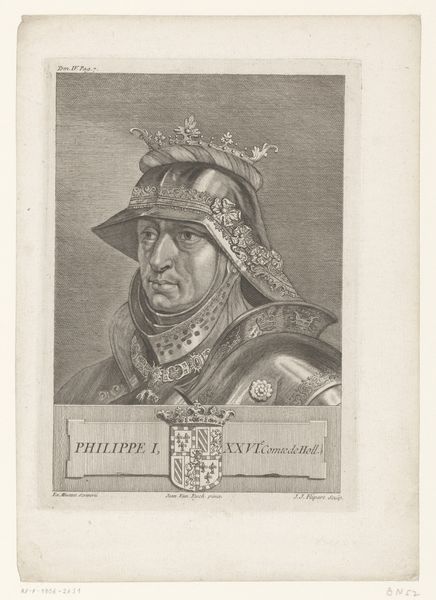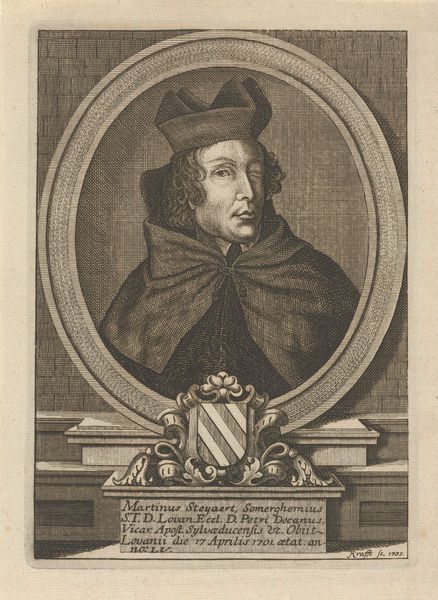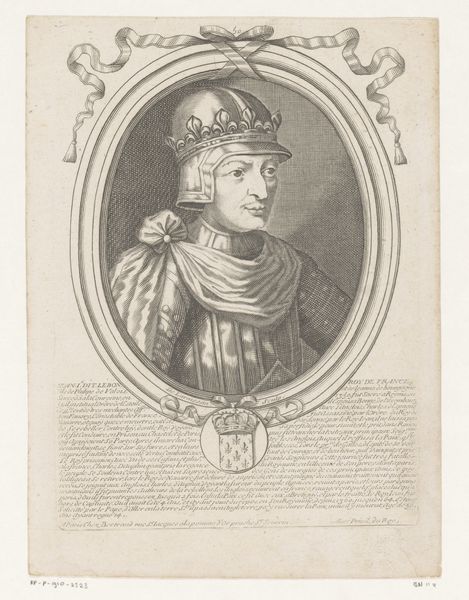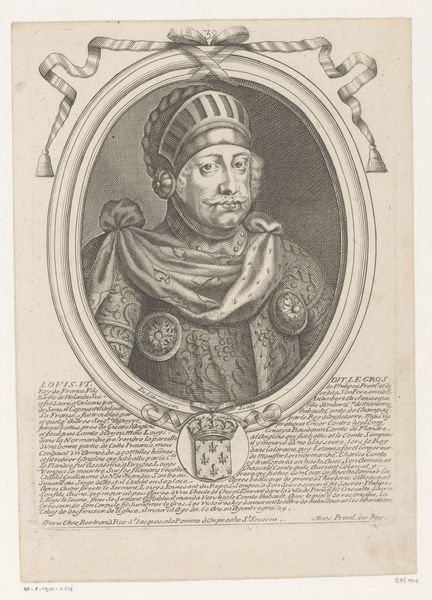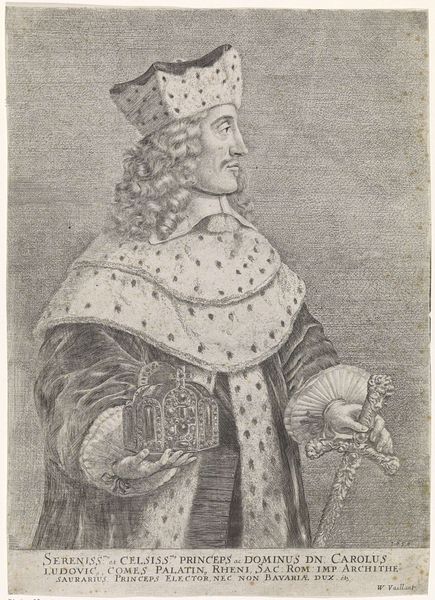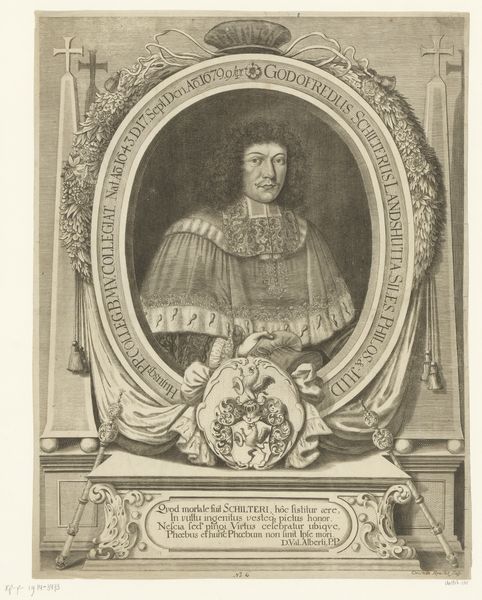
print, engraving
#
portrait
#
baroque
# print
#
old engraving style
#
history-painting
#
engraving
Dimensions: height 220 mm, width 156 mm
Copyright: Rijks Museum: Open Domain
Curator: I’m immediately struck by the somber feel of this portrait. All those meticulous lines, and yet a profound melancholy radiates from Albrecht. It’s as though the weight of the crown is almost unbearable, right? Editor: Indeed. Well, what you're perceiving comes to us through a 17th-century engraving now held at the Rijksmuseum. This print, entitled "Portret van Albrecht II van Habsburg, Rooms-Duits koning," is the work of an anonymous artist. This historical context is what gives his particular style its shape: the Baroque style was prominent then. Curator: Baroque... and yet there's something so inherently personal conveyed. Look at the Habsburg's guarded expression – he appears as though you've caught him mid-thought. Perhaps worried? Even the heraldic crest above the oval framing him feels almost like a bird cage. A symbol can have an imprisoning power too, no? Editor: Certainly! Symbols always carry multiple layers of meaning. Consider the crown itself. We read 'authority', 'divine right', and so on. However, for the person wearing it, it might be the symbol of burden and heavy responsibility. Think of it psychologically, a sort of gilded cage where everything from their behavior to emotions is shaped by expectation and history. It reflects a deeply historical perspective. Curator: That's brilliantly put, gilded cage. It’s like an antique meme. And I love the very literal 'old engraving style' – perfect for portraying the severity of royal duty and legacy. All these rigid lines, a sharp, unrelenting depiction of Albrecht, but yet… Editor: Yet? Curator: Well, it lacks spontaneity. It doesn't breathe, does it? But that's, ironically, the source of its potency. Because the work exists to demonstrate controlled might rather than depict it realistically. Editor: Precisely! By simplifying and standardizing a human being into such rigid iconographic terms, it ironically showcases power: absolute dominion even over representation! We must keep that in mind in viewing it. Curator: Looking closer, I appreciate its intricate execution, though. All those tiny strokes combine to portray so much in light and shadow. The eyes, the subtle turn of the head – even those minuscule elements bring a certain dignity to the piece that wouldn't be there otherwise. Editor: Ultimately, I agree. There's still life here in all the rigid formality, reminding us that beyond the history and symbolism, real people once embodied these figures and struggled beneath those crowns. Curator: Maybe that's the real, timeless iconographic power, this little contradiction. That's a fun irony to take with you today, don’t you think?
Comments
No comments
Be the first to comment and join the conversation on the ultimate creative platform.
